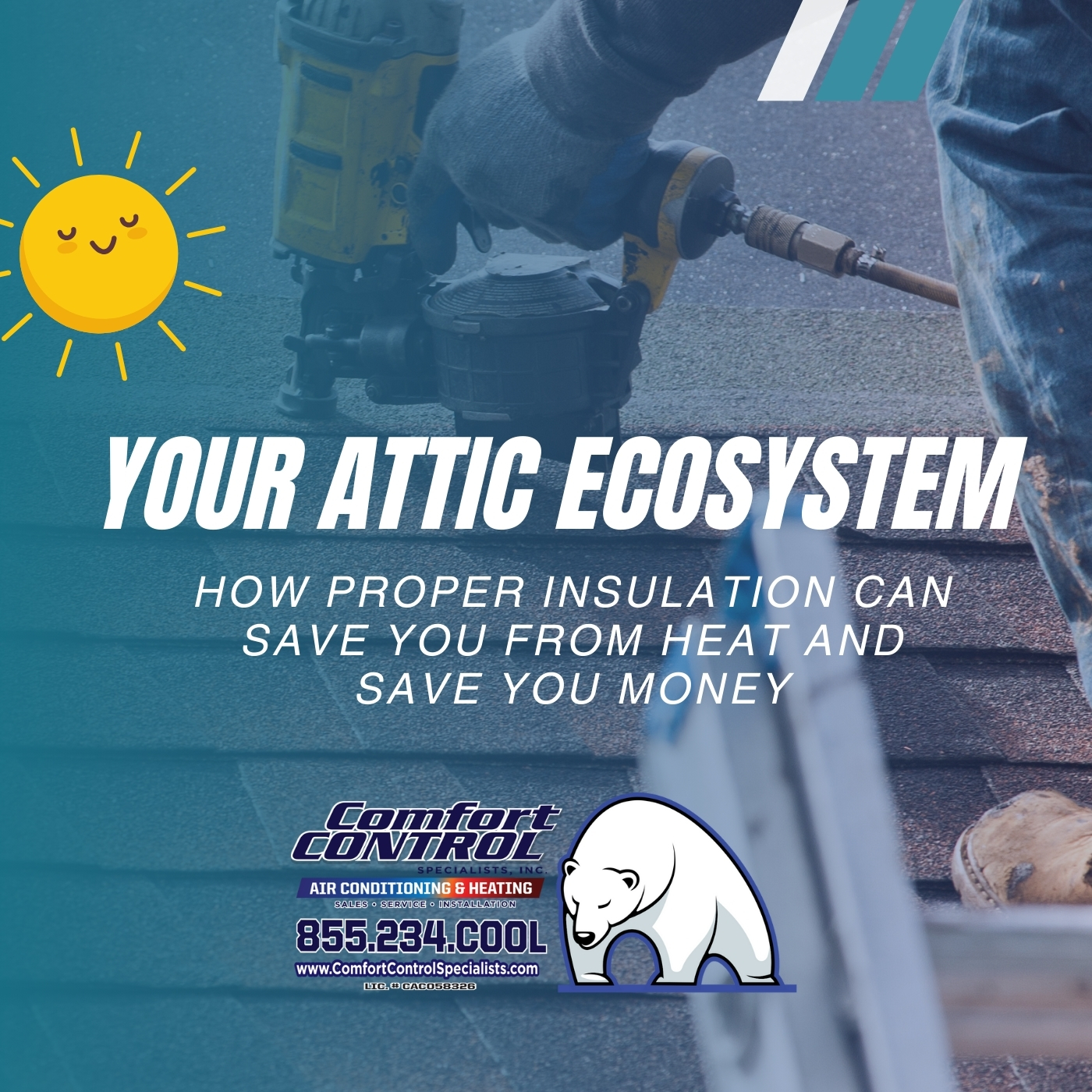
The Ecosystem of a Florida Attic: How Proper Insulation Is Key to Energy Efficiency and Air Circulation
In Florida, the attic is one of the most crucial yet often overlooked parts of any home or business when it comes to energy efficiency and air quality. Acting as a buffer between the outdoor environment and your indoor living space, the attic absorbs heat and facilitates airflow. However, without proper insulation and ventilation, this space can turn into a breeding ground for inefficiency, driving up energy costs and placing unnecessary strain on your air conditioning system.
This article delves into the ecosystem of a Florida attic, emphasizing the importance of insulation and ventilation for creating a well-balanced, energy-efficient environment. We’ll define key industry terms, explore types of insulation and their effectiveness, and explain the science behind a healthy attic. By understanding the intricacies of attic management, you can make informed decisions to keep your home or business cool, comfortable, and efficient.
1. Understanding Key Industry Terms
Before diving into the details, it’s essential to understand some key terms used in the insulation and energy efficiency industry:
R-Value
- Definition: The R-value is a measure of an insulation material’s thermal resistance. The higher the R-value, the better the insulation is at reducing heat flow.
- Importance: In a hot and humid climate like Florida, a high R-value is crucial to prevent heat from infiltrating your living space and overloading your air conditioning system.
Thermal Resistance
- Definition: Thermal resistance refers to the ability of a material to resist heat transfer. It’s often represented by the R-value, which quantifies how well the insulation material can slow down the flow of heat.
Air Sealing
- Definition: Air sealing is the process of closing gaps, cracks, and holes in a building’s structure to prevent air leaks. Proper air sealing complements insulation by keeping conditioned air inside and preventing outdoor air from entering.
Radiant Barrier
- Definition: A radiant barrier is a reflective material, often made of aluminum, installed in attics to reduce radiant heat gain. Unlike traditional insulation, it doesn’t have an R-value but is highly effective in hot climates by reflecting heat away from the attic space.
2. The Role of an Attic in a Home’s Ecosystem
The attic serves multiple functions in a home, acting as a shield against the elements, a facilitator of air circulation, and a protector of the home’s structural integrity. In Florida’s hot and humid climate, managing the attic’s ecosystem is critical for comfort and efficiency.
Heat Absorption and Distribution
Florida’s intense heat can cause attic temperatures to soar above 130°F during the summer. Without proper insulation, this heat can penetrate into your home, making your air conditioning system work much harder. Insulation helps mitigate this heat transfer, keeping your living space cool.
- Fact: According to the U.S. Department of Energy, up to 85% of the heat that accumulates in a home during the summer comes through the attic.
Moisture Control
Florida’s humidity adds another layer of complexity. Moisture can enter your attic through roof leaks, condensation, or poor ventilation, leading to mold growth, structural damage, and compromised air quality.
- Impact: Mold and mildew can cause health problems and weaken the home’s structure. Proper attic insulation acts as a barrier against moisture, protecting your home and its inhabitants.
3. Types of Attic Insulation, Cost Estimates, and Effectiveness
Not all insulation materials are created equal. In Florida, it’s important to choose insulation that can handle high heat and humidity while providing effective thermal resistance. Here’s a breakdown of common types of attic insulation, along with cost estimates and a comparison of cost versus effectiveness:
1. Fiberglass Batt Insulation
- Description: Fiberglass batts are pre-cut sections made from fine strands of glass fibers. They are installed between attic joists and are one of the most cost-effective options.
- R-Value: Ranges from R-3.0 to R-4.0 per inch.
- Approximate Cost: $0.30 to $0.70 per square foot. For a typical attic, installation can cost between $500 and $1,500.
- Pros: Easy to install, budget-friendly, non-flammable.
- Cons: Not ideal for sealing air leaks and can lose effectiveness if exposed to moisture.
- Cost vs. Effectiveness: Fiberglass batt insulation is cost-effective but may not be as efficient as other options in Florida’s humid climate, especially if it becomes damp.
2. Blown-In Fiberglass Insulation
- Description: Loose-fill fiberglass insulation is made from finely spun glass fibers and is blown into the attic using specialized equipment.
- R-Value: Approximately R-2.5 to R-4.0 per inch.
- Approximate Cost: $0.90 to $1.50 per square foot. Full attic installation may range from $1,000 to $2,500.
- Pros: Effective at filling gaps and irregular spaces, non-flammable.
- Cons: Requires professional installation and may settle over time, reducing thermal resistance.
- Cost vs. Effectiveness: More effective than batts for filling gaps but can lose R-value if it settles or gets wet. It’s a good middle-ground option for most budgets.
3. Blown-In Cellulose Insulation
- Description: Made from recycled paper products treated with fire retardants, cellulose insulation is another loose-fill option.
- R-Value: R-3.2 to R-3.8 per inch.
- Approximate Cost: $0.80 to $1.50 per square foot. Total costs usually range from $1,200 to $2,700 for an average attic.
- Pros: Eco-friendly, good at reducing air leaks, and provides better coverage than fiberglass.
- Cons: Can absorb moisture, leading to mold growth and a reduction in R-value over time.
- Cost vs. Effectiveness: Offers better air sealing than fiberglass but has a higher risk of moisture damage. Ideal for eco-conscious homeowners who can manage humidity levels.
4. Spray Foam Insulation
- Description: Spray foam expands to create an airtight seal. Available as open-cell and closed-cell foam.
- Open-Cell: Less dense, with an R-value of R-3.5 per inch. Suitable for filling larger spaces.
- Closed-Cell: Denser, with an R-value of R-6.5 per inch, and acts as a moisture barrier.
- Approximate Cost: $1.50 to $3.50 per square foot for open-cell and $2.50 to $5.00 per square foot for closed-cell. Full attic installation can range from $2,500 to $7,500.
- Pros: Excellent air sealing, high R-value, and moisture resistance (closed-cell).
- Cons: Expensive and requires professional installation.
- Cost vs. Effectiveness: Spray foam is the most expensive option but provides the best insulation and air sealing, especially for homes in humid or coastal areas. It’s an excellent investment for long-term energy savings.
5. Radiant Barrier Insulation
- Description: A reflective material installed in attics to reduce radiant heat gain. Commonly made of aluminum foil.
- R-Value: Not measured in R-value; effectiveness depends on the reduction of radiant heat transfer.
- Approximate Cost: $0.50 to $1.50 per square foot. Installation can cost between $500 and $2,000.
- Pros: Highly effective in hot climates like Florida, especially when combined with traditional insulation.
- Cons: Less effective in colder climates and must be installed properly to work well.
- Cost vs. Effectiveness: Radiant barriers are a great addition for homes with high heat exposure but should be paired with traditional insulation for the best results.
4. How Insulation and Air Circulation Work Together
The efficiency of your air conditioning system is closely tied to how well your attic insulation and ventilation work together. Let’s explore this relationship.
Thermal Resistance (R-Value) Explained
The R-value measures how well insulation resists heat transfer. In Florida, a high R-value is necessary to keep heat out and maintain a comfortable indoor temperature. The Department of Energy recommends an R-value of R-30 to R-60 for attic insulation in Florida, depending on the home’s design and attic structure.
- Efficiency Impact: A well-insulated attic can reduce the cooling load on your AC system by up to 30%, resulting in significant energy savings over time.
The Importance of Air Sealing
Insulation alone cannot prevent air leaks. Air sealing closes gaps and cracks in the attic, ensuring that conditioned air stays inside and hot, humid air stays out. This enhances the effectiveness of the insulation, making your home or business more energy-efficient.
The Role of Ventilation
Proper attic ventilation helps expel heat and moisture, maintaining a balanced attic environment. Types of ventilation include soffit vents, ridge vents, and powered attic fans.
- Fact: Adequate attic ventilation can lower attic temperatures by 10-20°F, reducing the strain on your AC system.
5. Common Attic Problems in Florida and How to Address Them
Florida’s climate presents unique challenges for attic management. Here’s a look at common problems and effective solutions:
1. Excessive Heat
- Problem: Attic temperatures can exceed 130°F, causing heat to radiate into your home and overburden your AC.
- Solution: High-R-value insulation, combined with a radiant barrier and proper ventilation, can significantly reduce heat gain.
2. High Humidity Levels
- Problem: Moisture in the attic can lead to mold growth and damage insulation.
- Solution: Closed-cell spray foam insulation acts as both an insulator and a vapor barrier. Proper ventilation is also key to keeping humidity in check.
3. Air Leaks
- Problem: Gaps and cracks allow hot air to enter and cool air to escape.
- Solution: Use foam sealant and weather stripping to close air leaks, followed by adding insulation to maintain efficiency.
4. Pest Infestations
- Problem: Attics often attract pests if there are entry points through air leaks.
- Solution: Sealing cracks and using pest-resistant insulation, like spray foam, can help keep critters out.
6. The Science of a Healthy Attic Ecosystem
A well-maintained attic creates a balanced ecosystem, optimizing temperature, humidity, and air quality.
Temperature Regulation
Insulation keeps indoor temperatures stable by reducing heat transfer. This minimizes the workload on your air conditioning system, conserving energy and prolonging the life of your HVAC equipment.
Humidity Control
In Florida’s humid climate, keeping moisture out is critical. Insulation and vapor barriers prevent humidity from entering your living space, reducing the risk of mold and mildew.
Air Quality
Air sealing and insulation improve indoor air quality by keeping outdoor pollutants and allergens from infiltrating your home. This is particularly important for people with allergies, asthma, or other respiratory issues.
- Fact: According to the Environmental Protection Agency (EPA), indoor air can be two to five times more polluted than outdoor air, making proper insulation and air sealing essential for health.
7. Visual Guide: Types of Attic Insulation (Photos)
For a comprehensive understanding, here are visual examples of different types of attic insulation:
- Fiberglass Batt Insulation: Rolls of fiberglass installed between attic joists.
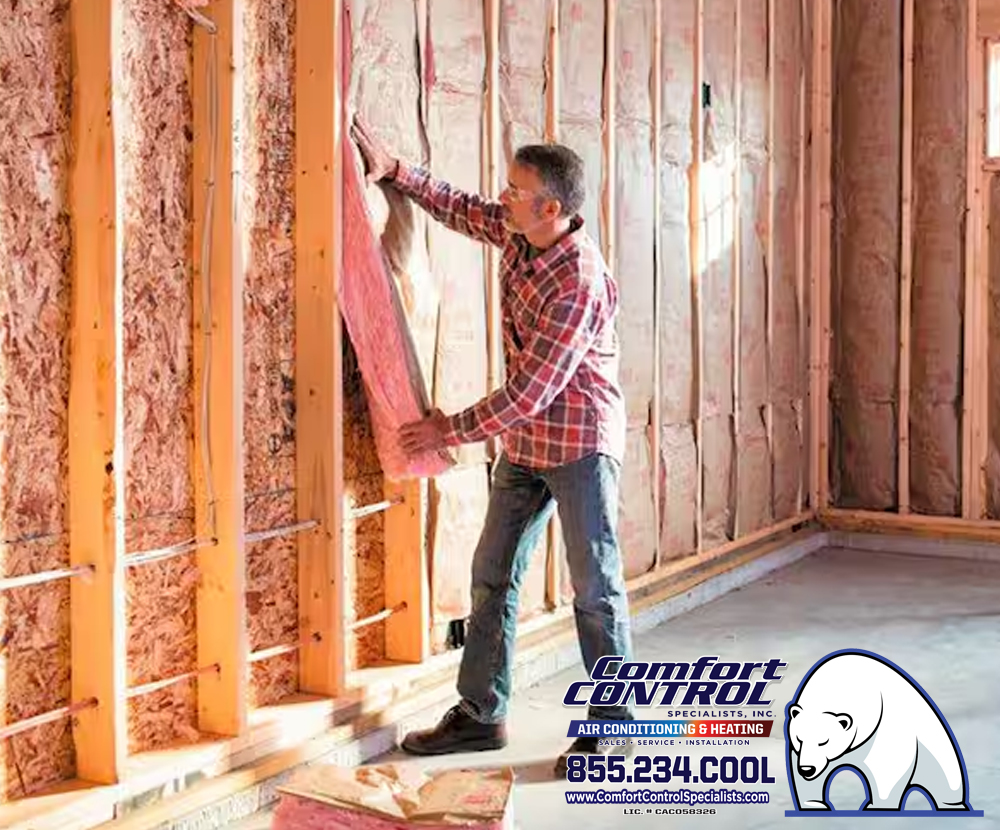
- Blown-In Fiberglass Insulation: Loose-fill fiberglass blown into the attic.
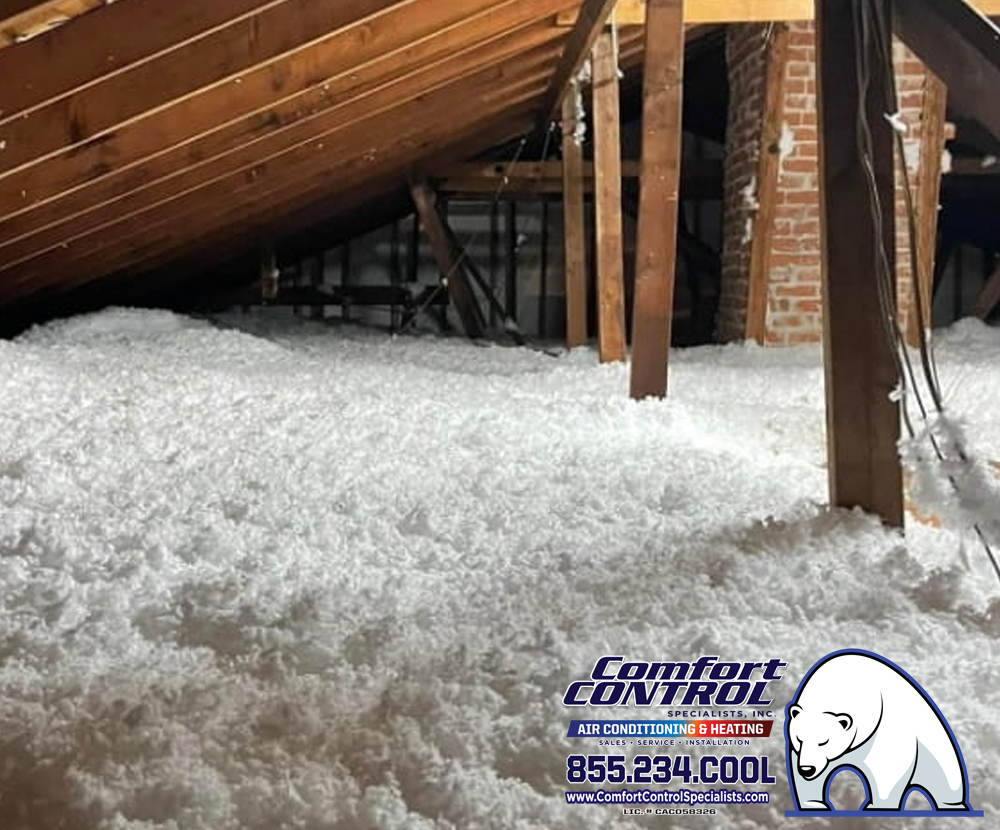
- Blown-In Cellulose Insulation: Recycled paper insulation treated with fire retardants.

- Spray Foam Insulation: Expanding foam that creates an airtight seal.
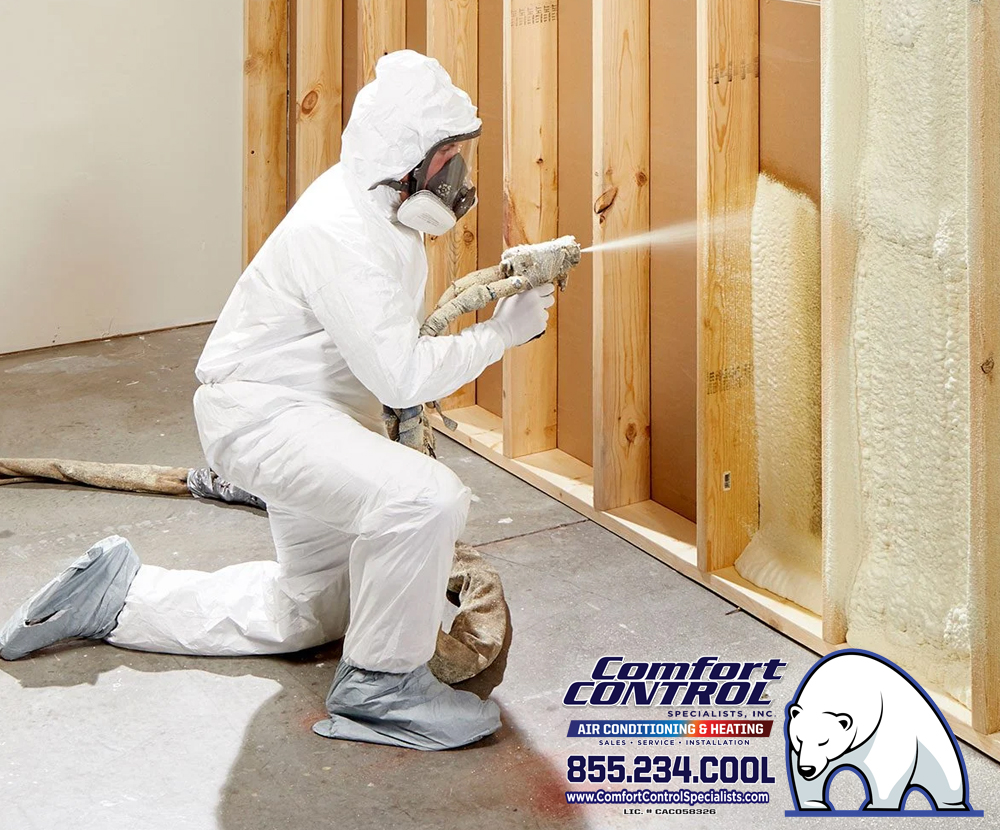
- Radiant Barrier Insulation: Reflective material that reduces radiant heat gain.
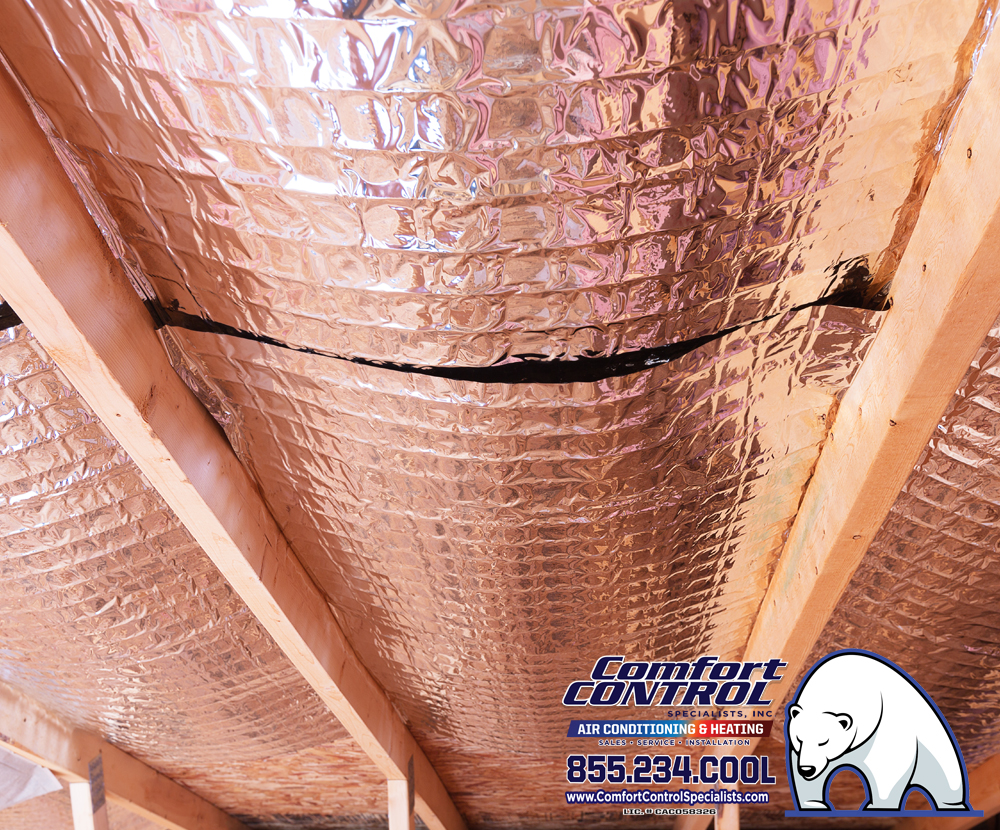
Prioritize Your Attic’s Health
The attic plays a pivotal role in your home’s overall energy efficiency and air quality, especially in Florida’s extreme climate. By investing in the right type of insulation, sealing air leaks, and ensuring proper ventilation, you create a balanced and efficient attic ecosystem. This not only reduces energy bills but also protects your home from moisture damage and improves indoor air quality.
Taking a comprehensive approach to attic management is one of the best investments you can make for your property. Whether you’re building a new home or upgrading an existing one, prioritizing your attic’s health is key to achieving a comfortable, energy-efficient living space.
Contact the Comfort Control Specialists for all of your HVAC installing, repair, and maintenance needs. We’d be happy to answer any questions about how a new air conditioning system can help increase your resale and property value.



